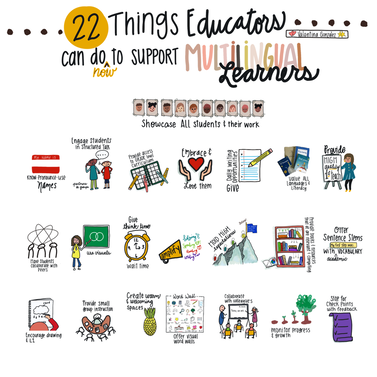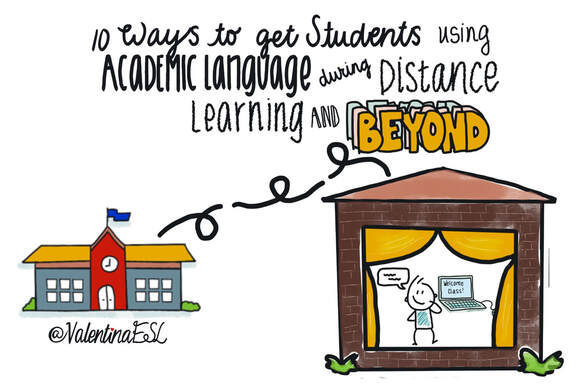|
Multilingual learners count on us to provide high-quality, comprehensible, and culturally responsive instruction in each lesson in every classroom.
Here are 22 practical and efficient ways (in no particular order) we can support emergent bilinguals as they climb to become our future global leaders. *The terms multilingual, emergent bilingual, and English learner are used interchangeably in this article and also include the acronyms MLs, EBs, and ELs.
1 Comment
This article originally posted on Middle Web on 1/6/2019. This is an updated version that includes how to promote academic language during distance learning.
“My kids seem to speak English well, but when it comes to academic tasks, they struggle.” We often wonder why English learners have a difficult time with standardized tests and essays in content areas but are able to communicate with peers and get along fairly well on a day to day basis. The reason behind it may be that academic language is different from everyday language. Academic language takes from 5-7 years to acquire while social or conversational language (often known as BICS, basic interpersonal communicative skills coined by Jim Cummins) only takes 2-3 years. What we know is that students need to make greater gains in academic language in order to become successful in school and post secondary. Academic language is the language of the content area of instruction. It is the textbook talk and vocabulary and syntax used in lectures and class presentation. It is not just single words and includes phrases and sentences as well. It is critical that English learners are offered many opportunities on a daily basis to practice using academic language. Why? We have to consider that some English learners go home to environments where they speak another language in the home. And that is awesome! Bilingualism has great benefits. However, to develop bilingualism, when they are in our classrooms or under our instruction, we have to build as many opportunities as possible for English language development using domain specific vocabulary. We have to put the language in their mouths. Other students (including native English speaking students) may go home to English speaking households, but the level of vocabulary or conversation may not be where we’d hope. This is yet another reason why our instruction (be it face to face or remote) needs to be filled with opportunities for students to use academic language. How can we get students to use academic language? Below you will find 10 ways to get students, especially English learners, practicing academic language in your classroom and beyond. What is the difference and Why should we care?Well, first and foremost, we should care if we want our students to speak like scholars. If we want our students to be marketable after they graduate. If we want them TO graduate! Then we should care! Sentence stems and frames are scaffolds as students learn language and content.
Sometimes educators use the terms sentence stems, sentence starters and sentence frames interchangeably. You may wonder...are they the same thing? The answer is no, they are are not the same. They have their own form and function.
A huge part of balanced literacy and a workshop setting is conferring with students. Conferring allows for maximum differentiation to meet specific instructional needs for students. But when we serve students who are also learning English, there is a need to accommodate the way we confer. After years of conferring with ELLs and tons of reading in the field, here are my tips for conferring with ELLs.
1. Model
Each kid benefits from seeing how to write before they DO the writing. BUT for English Learners this is even more important because language structures may vary from their native language. For example, if I want my students to write about themselves describing their age, I might show them that in English we write: " I am nine years old." This is different from other languages like my native language where a person might say, "I have nine years." Modeling what we expect from students gives them a clear goal for their writing. 2. Be Explicit |
Categories
All
|






 RSS Feed
RSS Feed
